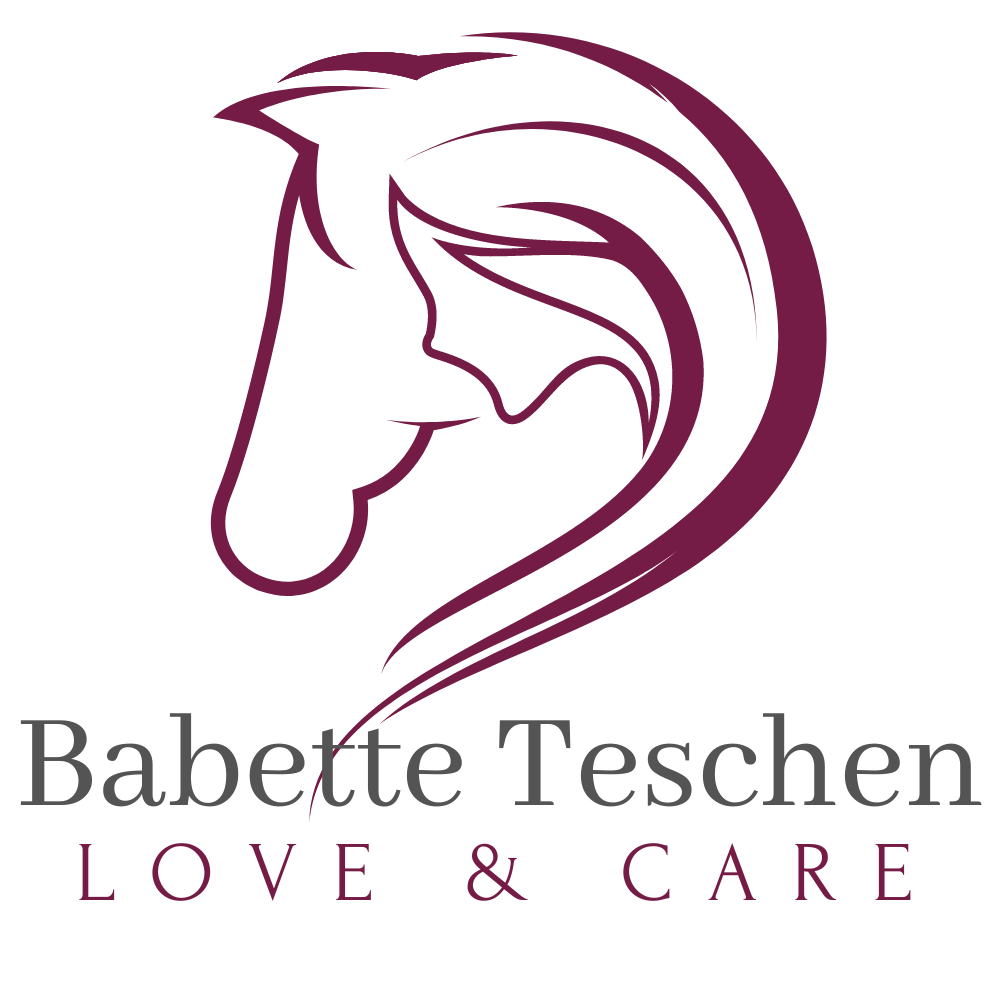Problems During Leading in Position | Lunging FAQ
by Babette Teschen
Q:
What do I do if the correct head and body position falls apart once I increase the distance to the horse? I have been working on leading in position as per your lunging course for some time now and it seems to be going well. However, every time I increase the distance to my horse and lose the contact to the cavesson, she loses the correct leading in position. Should I disregard it and continue leading with the cavesson?
A:
Correct leading in position is an exercise that poses the following question to your horse: “Can you respond to a light impulse on the cavesson to flex your poll correctly?”
We teach the lunge to the horse by giving soft impulses on the line and then check to see that the horse is responding with a soft poll and correct flexion. You can practice this by slowly increasing the distance and keep checking to see that the horse responds by softly bending at the poll. If he responds you can gradually increase the distance. If he does not respond well, we can see that your horse has not fully understood the leading in position yet. In this case we need to go back a few steps. This does not need to be done in the same session, as not to lose the horses’ motivation.
Q:
How long should each session be?
A:
I always follow this basic rule in all my training:
“Work your horse so he stays motivated and willing, making sure he does not get bored or annoyed.”
By following this rule, I keep my training sessions short and do not overtrain any one exercise. It is not necessary to excel at one exercise before moving on to the next. All exercises are building blocks and support each other. “Stelling” and bending is just as important as beat, an active hind end, balance, etc.
Q:
If leading in position is the basis to all further exercises, is it possible to also train other steps in the course even if we have not perfected the basics yet?
A:
Yes of course. As a rule, I practice leading in position on each hand for about 1-2 circles and then move on to one of the many other exercises in my lunging course, even if the leading in position is not perfected yet. I might move on to lunging in the square volte and practice enlarging the circle (direct the horse outside the square volte for 2-3 rounds and then back to the square volte). I could also lunge in the full arena making sure the horse steps out energetically while maintaining a good rhythm. Or I lunge in slalom and work on our communication through body language. It is also recommended to begin practicing the relaxed beginnings of trot (the so called “trolt”) or even to see if my horse is able to give me a few steps in counter shoulder in.
Q:
How long can I work my horse in leading in position?
A:
I usually only spend a few minutes doing each exercise. Every exercise builds on each other and becomes part of the puzzle that will hopefully eventually come together as “Correct movement on a circle”. So, there is no purpose in only practicing on exercise.
It is of great importance to always include the emotional state of the horse and to watch what comes easy, what he enjoys and to keep the sessions on the positive side. Starting with this frame of mind we can move to more challenging parts for short periods of time and encourage the horse to try some exercises that might be a bit more difficult for him. Varying the sessions with different exercises and difficulty levels makes the work more interesting for you both and will keep it fun while learning all aids, body language and the correct basics of good a movement pattern.
Q:
I have been massaging the stress points. The hollow feels much better than the stiff side. How should I proceed? What should I change?
A:
If you do not see any improvements during your training session, it would be advisable to have an osteopath or physiotherapist examine the horse as well as possibly your vet.
We can usually relieve mild tensions ourselves but more serious conditions such as an inflammation or possibly arthritis in the neck vertebrae can be the cause for some problems. If there is a medical diagnosis the horse will need to be professionally treated.




